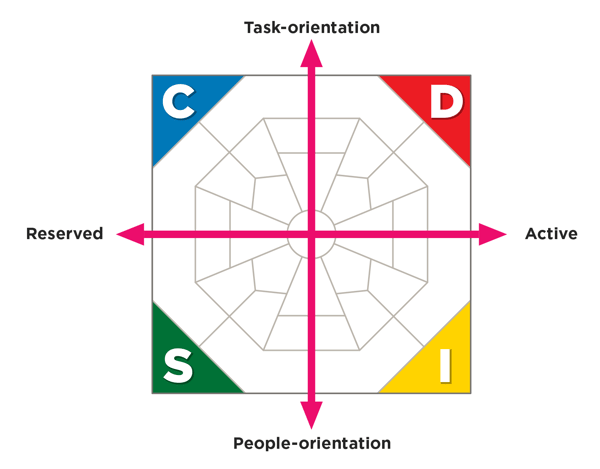S-styles are people-oriented, but more reserved. What else makes them different from the other styles?
4 DISC Styles
 DISC describes 4 behavioral styles. Each style is not better or worse; they are just different. Your DISC style helps identify your preferences for doing things. You have preferred styles and styles that take more energy; ultimately you have all 4 styles.
DISC describes 4 behavioral styles. Each style is not better or worse; they are just different. Your DISC style helps identify your preferences for doing things. You have preferred styles and styles that take more energy; ultimately you have all 4 styles.
The Extended DISC® tool identifies your preferred styles, as well as the styles that feel less natural to you. Remember, it's about energy, not about ability. You can succeed in any style and your style does not limit you.
We define the most successful people as having sharp self-awareness. They are aware of their strengths and their development areas. More importantly, they rely on their strengths, but are able to effectively modify their style.
Today, let's highlight the S-styles.
Identifying S-styles

S-style's motto would be, "if it's not broken, why fix it?" They are described as steady and sincere. They appear easy-going and calm; emotions tend not to show on the surface. S-styles are people-oriented and amiable, but usually prefer to interact with familiar people.
They are reliable and have a strong sense of fairness. If they tell you they are going to do something then they likely will. We describe them as slower to start because they will look for assurance and direction; they don't like to be rushed and will proceed cautiously.
Communication Style
 S-styles prefer to listen to you, rather than speak. They are attentive listeners, but will answer when asked. They will talk calmly and systematically. S-styles prefer to speak on matters they are knowledgeable about. One-on-one or small group communication tends to feel more comfortable. They can be great instructors because they take the time to explain things patiently.
S-styles prefer to listen to you, rather than speak. They are attentive listeners, but will answer when asked. They will talk calmly and systematically. S-styles prefer to speak on matters they are knowledgeable about. One-on-one or small group communication tends to feel more comfortable. They can be great instructors because they take the time to explain things patiently.
Preferred environment
S-styles prefer a team-oriented environment where they can participate and feel supported.They want you to be their sounding board and they also want to hear your input. They prefer to be surrounded by people they know.
S-styles are most comfortable in a structured and organized environment. They are steady; thus, they want their environment to be as well. They prefer clearly defined plans. Surprises and uncertainty can make the S-styles uncomfortable.

